Related Research Articles

The history of painting reaches back in time to artifacts and artwork created by pre-historic artists, and spans all cultures. It represents a continuous, though periodically disrupted, tradition from Antiquity. Across cultures, continents, and millennia, the history of painting consists of an ongoing river of creativity that continues into the 21st century. Until the early 20th century it relied primarily on representational, religious and classical motifs, after which time more purely abstract and conceptual approaches gained favor.

Max Ernst was a German painter, sculptor, printmaker, graphic artist, and poet. A prolific artist, Ernst was a primary pioneer of the Dada movement and Surrealism in Europe. He had no formal artistic training, but his experimental attitude toward the making of art resulted in his invention of frottage—a technique that uses pencil rubbings of textured objects and relief surfaces to create images—and grattage, an analogous technique in which paint is scraped across canvas to reveal the imprints of the objects placed beneath. Ernst is noted for his unconventional drawing methods as well as for creating novels and pamphlets using the method of collages. He served as a soldier for four years during World War I, and this experience left him shocked, traumatised and critical of the modern world. During World War II he was designated an "undesirable foreigner" while living in France.
Abstract expressionism in the United States emerged as a distinct art movement in the immediate aftermath of World War II and gained mainstream acceptance in the 1950s, a shift from the American social realism of the 1930s influenced by the Great Depression and Mexican muralists. The term was first applied to American art in 1946 by the art critic Robert Coates. Key figures in the New York School, which was the center of this movement, included such artists as Arshile Gorky, Jackson Pollock, Franz Kline, Mark Rothko, Norman Lewis, Willem de Kooning, Adolph Gottlieb, Clyfford Still, Robert Motherwell, Theodoros Stamos and Lee Krasner among others.

Antonello da Messina, properly Antonello di Giovanni di Antonio, but also called Antonello degli Antoni and Anglicized as Anthony of Messina, was an Italian painter from Messina, active during the Italian Early Renaissance.
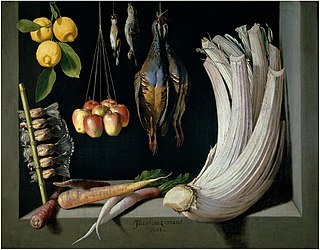
A still life is a work of art depicting mostly inanimate subject matter, typically commonplace objects which are either natural or human-made.
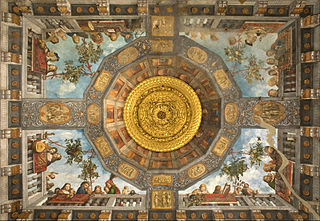
Trompe-l'œil is an artistic term for the highly realistic optical illusion of three-dimensional space and objects on a two-dimensional surface. Trompe l'œil, which is most often associated with painting, tricks the viewer into perceiving painted objects or spaces as real. Forced perspective is a related illusion in architecture.

Renaissance art is the painting, sculpture, and decorative arts of the period of European history known as the Renaissance, which emerged as a distinct style in Italy in about AD 1400, in parallel with developments which occurred in philosophy, literature, music, science, and technology. Renaissance art took as its foundation the art of Classical antiquity, perceived as the noblest of ancient traditions, but transformed that tradition by absorbing recent developments in the art of Northern Europe and by applying contemporary scientific knowledge. Along with Renaissance humanist philosophy, it spread throughout Europe, affecting both artists and their patrons with the development of new techniques and new artistic sensibilities. For art historians, Renaissance art marks the transition of Europe from the medieval period to the Early Modern age.

The art of Europe, also known as Western art, encompasses the history of visual art in Europe. European prehistoric art started as mobile Upper Paleolithic rock and cave painting and petroglyph art and was characteristic of the period between the Paleolithic and the Iron Age. Written histories of European art often begin with the Aegean civilizations, dating from the 3rd millennium BC. However a consistent pattern of artistic development within Europe becomes clear only with Ancient Greek art, which was adopted and transformed by Rome and carried; with the Roman Empire, across much of Europe, North Africa and Western Asia.
Conroy Maddox was an English surrealist painter, collagist, writer and lecturer; and a key figure in the Birmingham Surrealist movement.

Giovanni di Niccolò de Luteri, better known as Dosso Dossi, was an Italian Renaissance painter who belonged to the School of Ferrara, painting in a style mainly influenced by Venetian painting, in particular Giorgione and early Titian.
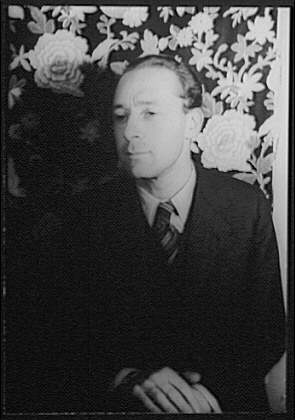
Pavel Fyodorovich Tchelitchew was a Russian-born surrealist painter, set designer and costume designer.
Ithell Colquhoun was a British painter, occultist, poet and author. Stylistically her artwork was affiliated with surrealism. In the late 1930s, Colquhoun was part of the British Surrealist Group before being expelled because she refused to renounce her association with occult groups.

Andrea Pozzo was an Italian Jesuit brother, Baroque painter, architect, decorator, stage designer, and art theoretician.

Cornelis Norbertus Gijsbrechts or Gysbrechts was a Flemish painter who was active in the Spanish Netherlands, Germany, Denmark and Sweden in the second half of the seventeenth century. He was a court painter to the Danish royal family. He specialised in trompe-l'œil still lifes, an artistic genre which uses visual tricks to give viewers the illusion that they are not looking at a painting but rather at real three-dimensional objects. He also created many vanitas still lifes.
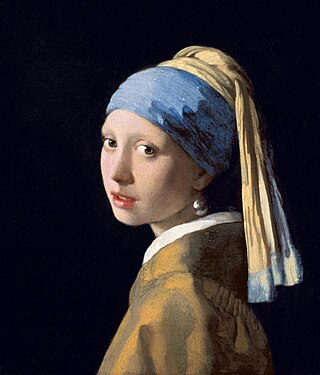
The history of Western painting represents a continuous, though disrupted, tradition from antiquity until the present time. Until the mid-19th century it was primarily concerned with representational and traditional modes of production, after which time more modern, abstract and conceptual forms gained favor.
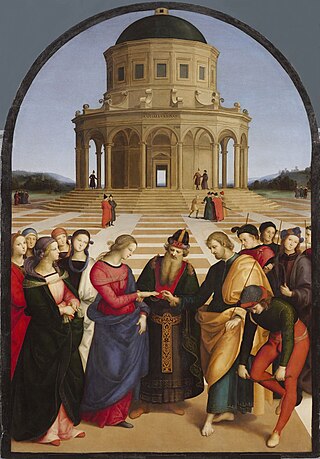
Italian Renaissance painting is the painting of the period beginning in the late 13th century and flourishing from the early 15th to late 16th centuries, occurring in the Italian Peninsula, which was at that time divided into many political states, some independent but others controlled by external powers. The painters of Renaissance Italy, although often attached to particular courts and with loyalties to particular towns, nonetheless wandered the length and breadth of Italy, often occupying a diplomatic status and disseminating artistic and philosophical ideas.

Mikuláš Medek was a Czech painter. He united the artistic tradition of over three generations and thanks to the originality of his expression, depth and spirituality of his extraordinary work, he occupies one of the most prominent places in the Czech art history of the post-war period. Medek's entire work must be perceived in the context of the times, as it directly reflects the oppressive atmosphere of the communist regime in Czechoslovakia. He worked freely only for a short period between 1963 and 1969 and had only two exhibitions in Prague during his lifetime.

Endre Rozsda was a Hungarian-French painter.

20th-century Western painting begins with the heritage of late-19th-century painters Vincent van Gogh, Paul Cézanne, Paul Gauguin, Georges Seurat, Henri de Toulouse-Lautrec, and others who were essential for the development of modern art. At the beginning of the 20th century, Henri Matisse and several other young artists including the pre-cubist Georges Braque, André Derain, Raoul Dufy and Maurice de Vlaminck, revolutionized the Paris art world with "wild", multi-colored, expressive landscapes and figure paintings that the critics called Fauvism. Matisse's second version of The Dance signified a key point in his career and in the development of modern painting. It reflected Matisse's incipient fascination with primitive art: the intense warm color of the figures against the cool blue-green background and the rhythmical succession of the dancing nudes convey the feelings of emotional liberation and hedonism.
Marion Elizabeth Adnams was an English painter, printmaker and draughtswoman. She is notable for her surrealist paintings, in which apparently unconnected objects appear together in unfamiliar, often outdoor, environments. Some of her paintings depict landscapes and landmarks close to, or within, her native town of Derby.
References
- ↑ "san Pelligrino in mostra il surrealismo di Giovanni Pelliccioli". www.ecodibergamo.it Retrieved 2016-4-19 (Google translation- Giovanni translated as John)
- ↑ "Giovanni Pelliccioli gives a new dimension to Surrealism". 22 July 2015.